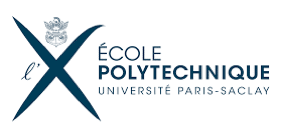NNT : 2016SACLX005
Thèse de Doctorat
de
l’Université Paris-Saclay
PRÉPARÉE À
L’ÉCOLE POLYTECHNIQUE
ÉCOLE DOCTORALE N°578
Sciences de l’homme et de la société
Spécialité de doctorat : Sciences de Gestion et Epistémologie Appliquée
Par
Dr Idriss J. ABERKANE
Mind Ergonomy for the Knowledge Economy. Software Neuroergonomics and Biomimetics for the Knowledge Economy
Why? How? What?
Thèse présentée et soutenue à Paris le 3 Février 2016 :
Composition du Jury :
Président : Prof. Francis Rousseaux Examinateur–IRCAM / URCA
Dr. Paul Bourgine – Codirecteur Académique Unesco-Unitwin CSDC – Ecole polytechnique
Prof. Pierre-Jean Benghozi – Codirecteur Académique Ecole polytechnique
Dr. Samuel Tronçon – Codirecteur Industriel Groupe Résurgences
Dr. Inès Safi – Examinateur – CNRS-Université Paris-Saclay
Prof. Charles Tijus – Examinateur Université Paris-8
Prof. Yves Burnod – Rapporteur – INSERM
Prof. Pierre Collet – Rapporteur – Unesco-Unitwin CSDC – Université de Strasbourg
Abstract :
Title : Mind Ergonomy for the Knowledge Economy : Software Neuroergonomics and Biomimetics for the Knowledge Economy. Why? How? What?
Keywords : software neuroergonomics – software biomimetics – user interface – knowledge economy – artificial writing – biomimicry – neurotechnologies
Abstract : Could we flow knowledge faster and better? Why is this a problem in the first place? How can we tackle it technologically? What could be a prototype solution? This work unifies these questions in the outline of a single, refutable and improvable paradigm of noodynamics – the study of knowledge flows – and nooconomics, the knowledge economy. This paradigm will answer the question “Why”. Neuroergonomics (“brain ergonomics”), and biomimicry, will be summoned in answer to the question “How”. Their contribution will follow from the knowledge flow equations proposed in this work. Two original optimisation problems are also posed in software neuroergonomics and biomimetics: the Mindscape and Serendipity Problem. A case of theoretical neuroergonomics, or neuroergonomics ex ante is proposed with the study of Hyperwriting, a written grapheme-loceme association, or a glyphic method for externalising spatial memory. Its application to the design of user interface will finally found neuroergonomic design, or neuromimicry, with the example of a collegial interface to augment multiscale knowledge flows: Chréage. The anatomy of this prototype mindscape will be the technological conclusion of this work, and its answer to the question “What”?
Titre : Neuroergonomie et Biomimétique logicielle pour l’économie de la connaissance : Pourquoi? Comment? Quoi?
Mots clés : neuroergonomie logicielle – biomimétique logicielle – interface homme-machine – économie de la connaissance – écriture artificielle – biomimétisme – neurotechnologies
Résumé : La connaissance mondiale déclarée double environ tous les 9 ans (Kozmetsky, Smilor 1999) Parallèlement, le langage écrit ou verbal demeure le mode de transmission privilégié de la connaissance dans les organisations et sur le Web où aucune lingua franca n’a émergé, et qui est dès lors fractionné en contenus sinophone, anglophone, hispanophone, arabophone, hindiphone etc. Nous utilisons les travaux de Pesenti et al (2001), sur la mémoire épisodique dans son détournement par les calculateurs prodiges pour théoriser et concevoir une nouvelle interface homme-machine spatialisée qui permette à l’utilisateur individuel et en groupe de visualiser, de manipuler mentalement et d’échanger plus de connaissances. La théorisation et la conception de cette gamme d’interfaces, basées sur des algorithmes de spatialisation de listes, et l’unique objet de notre thèse.


